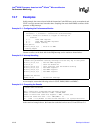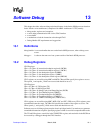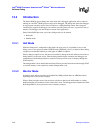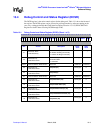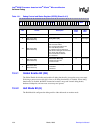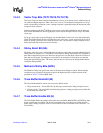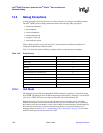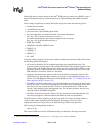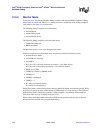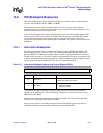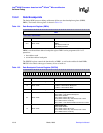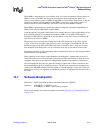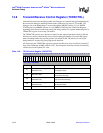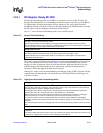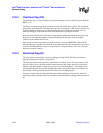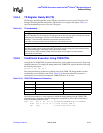
13-8 March, 2003 Developer’s Manual
Intel
®
80200 Processor based on Intel
®
XScale
™
Microarchitecture
Software Debug
13.5.2 Monitor Mode
In monitor mode, the processor handles debug exceptions like normal ARM exceptions. If debug
functionality is enabled (DCSR[31] = 1) and the processor is in Monitor mode, debug exceptions
cause either a data abort or a pre-fetch abort.
The following debug exceptions cause data aborts:
• data breakpoint
• external debug break
• trace-buffer full break
The following debug exceptions cause pre-fetch aborts:
• instruction breakpoint
• BKPT instruction
The processor ignores vector traps during monitor mode.
When an exception occurs in monitor mode, the processor takes the following actions:
• disables the trace buffer
• sets DCSR.moe encoding
• sets FSR[9]
• R14_abt = PC of the next instruction to execute + 4 (for Data Aborts)
R14_abt = PC of the faulting instruction + 4 (for Prefetch Aborts)
• SPSR_abt = CPSR
• CPSR[4:0] = 0b10111 (ABORT mode)
• CPSR[5] = 0
• CPSR[6] = unchanged
• CPSR[7] = 1
• PC = 0xc (for Prefetch Aborts),
PC = 0x10 (for Data Aborts)
During abort mode, external debug breaks and trace buffer full breaks are internally pended. When
the processor exits abort mode, either through a CPSR restore or a write directly to the CPSR, the
pended debug breaks immediately generate a debug exception. Any pending debug breaks are
cleared out when any type of debug exception occurs.
When exiting, the debug handler should do a CPSR restore operation that branches to the next
instruction to be executed in the program under debug.



